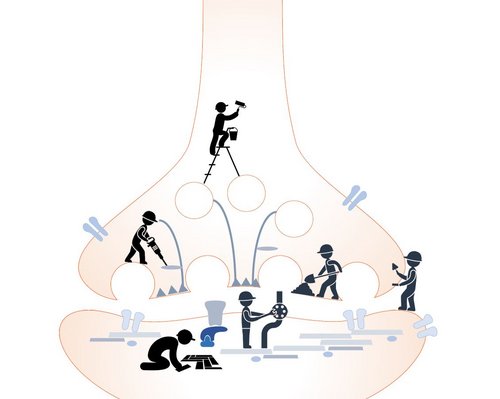How does learning and memory work?
Our brain processes sensory perceptions, coordinates movements, and controls behaviours. It can also store complex information – but not everything that we experience can remain permanently in our memories. So how does learning and memory work?
Approximately 86 billion nerve cells exist in a human brain. The neurons are connected to each other via synapses that are specialized in electrochemically converting and transmitting signals.
During learning, individually and selectively acquired information from the environment is stored in memory in a retrievable form. This happens sometimes only for a short time, sometimes based on experiences, also over longer periods of time, possibly even over a lifetime. Learning is based on a specific amplification of certain synapses at which the signal transmission is facilitated by biochemical and structural modifications (keywords here are long-term potentiation and synaptic plasticity). Plastic synapses change their structure and their transmission properties which are the basis for learning and memory processes. Sometimes new synapses are formed during learning or synapses that are no longer used are degraded.
How well we can learn and remember depends on factors such as attention, motivation and reward. Important and unimportant information are separated. There is no central place in the brain where information is stored, but the hippocampus is a central switching point for many memory contents. If errors occur in this complex system, memory problems such as amnesia or Alzheimer's can occur.

![[Translate to English:] [Translate to English:]](/fileadmin/_processed_/b/e/csm_Facts_01_9e57ba4264.jpg)

